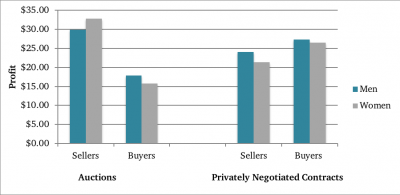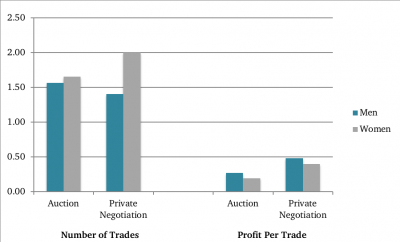Mary Jo sits down at her kitchen table with a potential buyer to negotiate the sale of her lambs.
She dislikes haggling over prices like many agricultural producers in Wyoming. She wonders if she will get a good deal compared to her neighbor John Doe.
Mary Jo is not alone: women operate more farms and ranches in Wyoming than ever. Nearly 7,000 women in Wyoming are producers, accounting for 35 percent of the state’s agricultural producers who generate $81.2 million annually. Projections suggest these numbers will continue to increase.
Understanding how women in agriculture will fare financially is important for Wyoming agriculture and the communities dependent on farms and ranches. Recent USDA statistics indicate women operators have lower sales and lower returns on equity than males. Helping women like Mary Jo be successful means a better life for her and her family and a better economy for the state.
A changing market
Part of Mary Jo’s success depends on the prices she receives for her lambs and how many lambs she sells, both dependent on how her lambs are marketed. Yet the way in which agricultural products are marketed is changing. Historically, selling livestock at an auction or marketing grain through a local elevator were the primary outlets. Now more and more goods are traded through privately negotiated contracts. Over half of livestock and 35 percent of other commodities are now sold via contracting.
Agricultural producers in this marketing environment can find themselves negotiating contracts as both a buyer (purchasing inputs) and as a seller. These changes in the market may affect women’s and men’s finances differently if how they bargain is different.
Our past research finds sellers in general may be worse off as markets move to more privately negotiated contracts, but little is known about potential differences between women and men in these changing markets.
Using economic experiments in the laboratory
Most producers don’t share detailed accounts of how they bargain over price and quantity with buyers. This means we must use different research methods to understand this issue. Economists rely on experiments conducted in a laboratory. Experiments allow us to create a market environment that mimics the real world and offers a glimpse into human behavior.
We simulated agricultural markets in the laboratory where buyers and sellers traded a generic agricultural product. Sellers earned a profit by negotiating a price with a buyer that was higher than their operating costs. Buyers earned a profit by negotiating a price with a seller that was lower than the amount for which they could resell the product. Laboratory participants were given a limited amount of time to trade their desired quantity of the given product. Once complete, these participants were paid in cash based on their decisions. Data collected from these transactions offer us a detailed look into human behavior when negotiating over price and quantity.
Our laboratory market mimics auctions and private negotiations to understand how women and men negotiate and how profitable each are. In auctions, numerous buyers bid against one another to purchase a product from a producer. In privately negotiated contracts, one buyer and one seller actively negotiate with each other to reach an agreed-upon price.
How gender influences profitability

Results show buyers’ and sellers’ profits vary greatly between auctions and privately negotiated contracts (Figure 1). In auction markets, sellers outperform buyers, as buyers compete against each other to purchase a product. Buyers outperform sellers in privately negotiated contracts as sellers are focused on successfully negotiating a contract to cover their operating costs. The move away from auction markets is expected to hurt agricultural producers when selling their products.
We find the gender of an operator indeed plays a role in market success and profitability. Women sellers outperform men in auction market environments, suggesting the inactive role of a seller during the negotiation process in auction markets benefits women. Men, on the other hand, outperform women as buyers in auction markets. The competitive nature of bidding in these markets may be detrimental to women buying agricultural products at auction.
Men were found to outperform women as both buyers and sellers in privately negotiated contracts, further suggesting that more active negotiation environments negatively affect women’s profitability.
Our results indicate women are expected to be disproportionally hurt as agricultural markets move away from auction environments toward privately negotiated contracts. The profitability, and thus viability, of women producers is expected to suffer.

What drives the gender difference?
Since profitability is dependent on revenues and operating costs, numerous factors can be at play. In the lab, by making operating costs constant across participants, we can isolate the impact of two factors on profitability: negotiated prices and quantity traded. With these two factors, we find gender differences in behavior during negotiation that may cause the profitability differences by gender.
We find different tendencies between men and women when they bargain. Women tend to bargain in a manner that results in lower prices as sellers (higher prices as buyers) to move the sale along, which increases their number of trades, but results in a lower profit per trade. Men tend to bargain in a manner that leads to higher prices as sellers (lower prices as buyers) decreasing the quantity traded but resulting in a higher profit per trade (Figure 2).
Without the lab, determining which of these strategies is most beneficial would be virtually impossible. Yet, with the detailed information gathered from experiments, we find the best strategy depends not only on the market environment (auctions versus contracts), but also on the role an individual plays in the market (buyer or seller).
The strategy of trading more at lower prices, practiced by women, is only beneficial as a seller in auction markets. As agricultural products rely more on privately negotiated contracts, the negotiation strategy of focusing on a better price per trade, practiced by men, will lead to higher profits, and increased success.
What can we do to help producers like Mary Jo?
As women continue to increase their prevalence in agriculture, helping them succeed is vital for a strong and stable economy. Given the evolution of agricultural markets, our research suggests Mary Jo may not get as high of a price for her lambs as her male neighbors, and her profitability will suffer.
Educational opportunities need to be available for Mary Jo and others that stress the importance of strategy during negotiation. We, and others in the Department of Agricultural and Applied Economics, are now investigating ways to help all producers improve their bargaining skills.
We hope to develop educational information to help producers like Mary Jo be more successful as agricultural markets move toward more privately negotiated contracts.
Authors: Chian Jones Ritten, Assistant Professor, Christopher Bastian, Professor, Selena Gerace, Assistant Extension Educator, Amy Nagler, Assistant Research Scientist, Department of Agricultural and Applied Economics
To contact: Jones Ritten can be reached at (307) 766-3788 or at chian.jonesritten@uwyo.edu.





